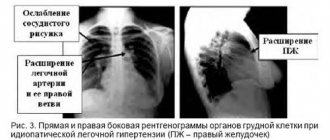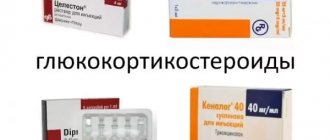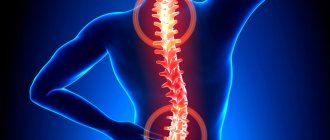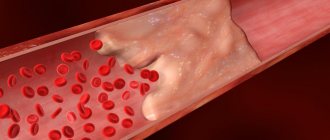If a person has increased intracranial pressure (ICP), attention is not always immediately paid to the syndrome, because it often occurs with mild symptoms. The pathology can develop both in childhood and in adulthood; it is more often diagnosed in women.
To protect yourself and start treatment on time, you need to know the symptoms of intracranial pressure to prevent the sad consequences of advanced forms of the disease. Next, we will talk about the essence of the diagnosis, the reasons that provoke indicators of intracranial pressure, symptoms, methods of diagnosis and treatment.
How does intracranial pressure increase?
An increase in pressure inside the skull can be caused by various reasons, of which there are many, but most often doctors diagnose a deterioration in the outflow of liquor fluid from the cavity of the cranium. If some people believe that there is nothing in the skull except the brain and the nerve cells that fill it, this opinion is wrong. In an adult, just like in a child, 1/10 of the brain is occupied by cerebrospinal fluid; it is located in its central part in special chambers (ventricles).
Another part of the cerebrospinal fluid constantly moves in microscopic spaces, reminiscent of arachnoid formations, present in the spaces between the membranes of the brain and spinal cord. Liquor performs many functions - it protects the skull and brain structures from blows and injuries, cleanses the body of harmful decay products and toxins, and stabilizes ICP. Complete renewal of cerebrospinal fluid occurs within 7 days, two-thirds of it is formed in the cerebral ventricles, and another part is formed from the blood supplying the brain tissue.
Normal intracranial pressure for an adult is 3–15 mmHg. Art., in children and adolescents the indicators are lower - 2–5 and 3–7 mm Hg. Art. respectively. High intracranial pressure, when the readings increase to 30 mmHg. Art., is considered dangerous to human health and life, since it threatens irreversible damage to brain neurons and death.
What are the risks of increased intracranial pressure? Complications and consequences
The brain is the highest energy system in the human body. It needs approximately five times more oxygen than the heart. Therefore, the quality of blood supply to the brain is a vital indicator that depends on two parameters - blood pressure and intracranial pressure. At constant blood pressure, the lower the intracranial pressure, the better the blood supply to the brain. If for some reason intracranial pressure increases, this proportionally worsens the blood supply to the brain, and ischemia develops. Therefore, high intracranial pressure is a dangerous condition that can cause the following complications:
- reduction and complete loss of vision;
- convulsions;
- acute cerebrovascular accident;
- depression and/or disorder of consciousness;
- depression of respiratory and circulatory function.
Important! With a rapid increase in intracranial pressure, there is a threat of death. If the symptoms are severe or appear sharply, suddenly and rapidly increase, you need to call an ambulance.
Causes of the disease
It should be clarified that signs of ICP do not arise just like that; pathology always accompanies any diseases and abnormalities in the functioning of the body. Symptoms of the disease begin to appear due to the following reasons:
- congenital abnormal structure of capillaries and brain structures;
- obesity due to hypertension;
- diseases of the endocrine system;
- traumatic brain and birth injuries;
- infectious diseases - meningitis, mastoiditis, malaria, complications of otitis media and pneumonia;
- neoplasms, cysts and abscesses in the cranial cavity;
- osteochondrosis of the cervical spine;
- use of certain groups of medications - corticosteroids, tetracycline and sulfonamide antibiotics, oral contraceptives in women).
We must not forget about hereditary predisposition to the disease. If several relatives in the direct line suffered from signs of intracranial pressure, they can definitely appear in the heirs.
In children, cranial pressure increases as a result of an unfavorable course of pregnancy in the mother (if there was brain hypoxia in the fetus, asphyxia, damage by toxic substances). You can also develop the disease during a cesarean section or when pulling the baby out of the birth canal with forceps. All these factors contribute to increased production of cerebrospinal fluid and the development of hypertensive-hydrocephalic syndrome.
Reasons for the development of the pathological condition
Among the main reasons for the development of the pathological process, doctors name:
- Heredity.
- Somatic pathologies.
- Exchange disorders.
Manifestation of headache
| Organs and systems | Nature of pathological processes |
| Kidneys | |
| CNS | |
| Heart and circulatory system | |
| Endocrine system | |
| Other anomalies |
Factors for the development of ICH
The main provocateur of intracranial pathology is the improper movement of fluid that is produced by the ventricles of the brain.
An episodic jump in ICP can also occur in a completely healthy baby for physiological reasons, for example, during the period of crying or breastfeeding, which is explained by physical and mental stress at this moment.
If it is impossible to determine the provoking factor of the painful condition, doctors diagnose the baby with a congenital pathology - intracranial hypertension of the idiopathic type.
Causes of pulmonary hypertension
Pulmonary hypertension in infants of the persistent type is diagnosed in babies born on time or post-term.
- Indirect signs of intracranial hypertension
Main reasons for development:
- Hypoxia or suffocation during the perinatal period of the fetus.
- Meconium staining of amniotic fluid.
- Penetration of original feces into the trachea.
- Respiratory distress syndrome.
- Closure of the foramen rotundum or arterial canal.
- Underdevelopment of the entire lung structure.
- Diaphragmatic hernia of intrauterine nature.
- Pneumonia of newborns (neonatal sepsis).
Characteristic symptoms
How to understand that a person has increased cranial pressure, what signs may indicate a problem? There is no special device that will allow you to check the level of intracranial pressure, but you should pay attention even at the initial stage of the disease to the following symptoms:
Signs of a hypertensive crisis
- Headaches, especially disturbing at night and in the morning; this symptom sometimes helps to recognize increased pressure inside the skull. They vary in nature, from dull, aching and not expressed, to intense, accompanied by pain in the eyeballs and the inability to turn the eyes in the other direction.
- Deterioration of vision. At the initial stage of ICP, a person notices the flickering of “spots” before the eyes, double objects and blurred pictures; the symptoms either appear or go away on their own. As the disease worsens, the changes become permanent and pronounced.
- Dizziness, fainting. They are accompanied by severe headaches and occur in response to weather changes, after physical exertion or stress. In severe cases, fainting occurs with convulsions.
- Attacks of nausea. They appear not only after eating, but often in the morning, when a person has not even had time to have breakfast. It is noteworthy that nausea and vomiting occur during the next attack of headache, at its very peak.
- Irritability, nervousness, frequent mood swings, tendency to apathy and depression.
- Signs of vegetative-vascular dystonia are increased fatigue, weakness, sweating, chronic fatigue, sleep disturbances, rapid heartbeat.
In severe forms of the disease, the patient may experience generalized seizures with muscle paresis, respiratory depression and the risk of developing cerebral edema. That is why, if the listed signs of increased intracranial pressure appear, you should not delay your visit to the hospital, but immediately begin an examination.
In children, you can learn about the development of pathology by the following clinical symptoms:
- moodiness, lethargy, poor sleep with frequent awakenings;
- bulging of a large fontanel, covering the scalp with a pronounced network of blood vessels;
- protrusion of the eyes, due to which the pupils are visible between the eyelids during sleep;
- increase in head volume - in advanced forms of the disease, the skull can increase 2-3 times more than normal;
- frequent regurgitation, up to 3–4 times a day;
- deterioration in health when the child lies in a crib in a horizontal position - this causes the cerebrospinal fluid to flow from the cranial cavity even worse, and signs of high ICP develop.
Increased intracranial pressure is usually recorded simultaneously with neurological disorders in a child - nosebleeds, stuttering, a trembling chin while crying, blue discoloration of the nasolabial triangle. However, such signs may not indicate high blood pressure, but occur in isolation against the background of perinatal encephalopathy.
Clinical picture (symptoms)
With arterial hypertension, the manifestations are different and depend on the severity. With moderate high blood pressure, there may be no symptoms, but rarely the child experiences headaches, fatigue, and excessive irritability. A significant increase in blood pressure is accompanied by:
- anxiety;
- unmotivated crying;
- apnea attacks;
- shortness of breath.
Pulmonary hypertension manifests itself:
- heavy breathing of the child;
- retracting the pliable parts of the chest while inhaling;
- reduced saturation (saturation of hemoglobin with oxygen);
- cyanosis of the skin and mucous membranes.
With increased pressure in the pulmonary arteries, the child’s response to oxygen therapy is practically absent, which is why the procedure is ineffective.
Among the clinical manifestations of intracranial high pressure :
- decreased sucking activity;
- tense, swollen fontanelles that lack pulsation;
- dilated superficial veins of the head area;
- unmotivated crying, screaming;
- convulsions;
- divergent cranial sutures;
- damage to the cranial nerves, which is accompanied by impaired motor functions of the eyeball, sense of smell, work of the cervical, facial and trapezius muscles, heart, gastrointestinal tract and many other systems.
Also, the newborn develops Graefe syndrome, in which part of the sclera can be seen at the top of the eyeball. The phenomenon is observed only when the child’s eyes are downcast.
Diagnostics
What should you do if an adult or child shows signs of increased ICP, especially on a regular basis? Seek advice from a neurologist and undergo the necessary examination. In severe cases of the disease, rather dangerous and complex techniques are used, for example, puncture of the cerebral ventricles and insertion of catheters into the sites of cerebrospinal fluid circulation.
A puncture of liquor fluid from the spinal vertebral region is also performed. This measure is necessary if an acute or latent neuroinfection is suspected. Examination methods require appropriate equipment, completely sterile conditions and highly qualified specialists, so they are not used so often. What causes high intracranial pressure is now clear, but how else can a correct diagnosis be made?
There are simpler and safer research methods for this:
- Ultrasound of cerebral vessels;
- Magnetic resonance imaging;
- CT scan;
- neurosonography (NSG);
- examination of the fundus by an ophthalmologist.
During an ultrasound examination, the attending physician is able to determine approximate indicators of intracranial pressure and evaluate the structures of the brain for congenital abnormal structure. MRI and CT scans provide information about the presence of changes in the cavities of the brain containing cerebrospinal fluid - whether they were damaged or ruptured during traumatic brain injuries. A fundus examination is indicated for all patients with suspected high ICP - it shows changes in the size of the capillaries of the apples, small hemorrhages on the surface of the retina, and vascular spasms.
Facts and myths about increased intracranial pressure
There are several misconceptions about intracranial hypertension:
- It does not need to be treated; the condition will go away on its own with age. In fact, both children and adults need treatment to avoid serious complications.
- The condition cannot be treated. False: Treatment results depend on the cause and severity of hypertension. Even if it cannot be completely cured, therapy greatly improves the condition and reduces the risk of health consequences.
- High intracranial pressure always causes developmental delays in children. This is a myth: with timely treatment, such consequences can be avoided.
It is important to know that:
- High intracranial pressure in children most often occurs due to hydrocephalus and birth injuries.
- Homeopathic or herbal preparations do not affect blood pressure in any way and do not help normalize it.
- If a person already has intracranial hypertension, he needs to be examined by a neurologist at least once every two years.
Possible complications
If measures are not taken in time and the blood pressure level is not normalized, as the disease progresses, the symptoms will only worsen, causing serious complications. These include:
- damage to the cerebellum with partial or complete loss of coordination in space;
- disorders of speech and mental functions;
- arrhythmia, tachycardia, surges in blood pressure due to compression of the brain stem;
- loss of vision;
- the appearance of epileptic convulsive seizures, during which the patient’s breathing is depressed, the risk of cerebral edema and transition to a coma increases;
- paralysis.
Now it has become clear why intracranial pressure that is not subject to adequate treatment is dangerous. The benign form of intracranial hypertension occurs much more easily and without dangerous consequences; it is more often observed in women aged 20–40 years, taking oral contraceptives and being obese. The disease manifests itself as unsteadiness of gait, dizziness, morning sickness and signs of migraine.
When hormonal medications are discontinued and lifestyle is adjusted, it happens that the symptoms of the pathology may go away on their own. But it’s better not to hope that in a particular case the problem is caused by a benign form of hypertension; it’s worth starting to fight it right away.
Causes of high blood pressure
The disease occurs in adults and children. Its causes can be congenital or acquired. They are conventionally divided into four groups:
- Volumetric formations.
This category includes brain tumors, cysts, abscesses, and vascular aneurysms. The tumor takes up space in the skull, compresses certain areas of the brain, and displaces its structures. This leads to a change in intracranial pressure. In young children, intracranial pressure higher than normal may be due to congenital developmental anomalies. Most often, specialists diagnose microcephaly or hydrocephalus. Trauma during childbirth, asphyxia, and oxygen starvation of the fetus can lead to pathology. At risk are babies born prematurely. - Edema.
Characteristic in the development of a number of diseases: encephalitis, meningitis, arachnoiditis, ischemic stroke, as a result of head injury, intoxication, hypoxia. Edema can be local, that is, affecting individual areas of the brain, or diffuse.
- Increased blood supply inside the skull.
This pathology occurs with dyscirculatory encephalopathy and a number of other diseases. In this case, the blood flow increases or its outflow from the vessels supplying the brain becomes more difficult. Due to increased blood supply, blood pressure rises. - Disorders of cerebrospinal fluid dynamics.
In the human body, the brain is surrounded by cerebrospinal fluid (CSF), which moves at a certain speed and affects brain tissue, thereby creating intracranial pressure. Part of the cerebrospinal fluid enters the blood, and the missing amount of fluid is produced to replace this volume. Thanks to this, constant pressure is achieved, which is considered normal. Infectious and inflammatory diseases, back and head injuries lead to various disorders of the secretion and circulation of cerebrospinal fluid. In this case, the absorption of cerebrospinal fluid becomes slow or its production is excessively activated. Liquorodynamic disorders can develop against the background of congenital anomalies in the structure of the spinal cord and brain. Intracranial dystension occurs, in which the pressure on the brain becomes uneven. Excessive accumulation of fluid in the cranium causes compression of individual areas and vessels, which leads to changes in intracranial pressure.
In addition to injuries and inflammation, disruption of the production and circulation of cerebrospinal fluid can cause treatment with potent drugs. At risk are patients who are forced to take hormonal drugs, antibiotics, and corticosteroids for a long time. Excessive amounts of vitamin A due to abuse of retinol preparations can lead to changes in intracranial pressure.
Treatment
In the case of a secondary process in adults, the culprit of the disease may be atherosclerotic changes in blood vessels, obesity, hypertension, and hormonal dysfunction. It is important not only to cure the primary disease, but also to eliminate the symptoms of ICP. For this purpose medications are used:
- diuretics – Furosemide, Veroshpiron, Torasemide;
- nootropic drugs - Pantocalcin, Piracetam, Pantogam, Tanakan, they improve the supply of oxygen to the brain and the transfer of nutrients to it;
- sedatives - valerian extract, peony and motherwort tinctures, Novo-passit, Persen forte;
- stimulators of nerve cells in the brain - Glycine, Nervohel, they also improve sleep, memory, concentration and attention;
- vitamin complexes, as well as a course of injections of B vitamins to restore normal functions of the nervous system.
Treatment of intracranial pressure begins with proper diagnosis and clarification of the cause of the pathology.
If there is a need for additional medications, the doctor makes a prescription, and the patient must strictly follow the instructions and complete the full course of treatment. In addition to medications, physical therapy and physiotherapy (SMT, electrophoresis, magnetic therapy) help to remove signs of ICP. General massage, ozokerite applications, acupuncture and hirudotherapy work well to combat symptoms.
The patient also needs to adjust their lifestyle:
- get proper rest and sleep at least 8 hours a day;
- follow a diet with limited salt to eliminate fluid retention in the body;
- drink no more than 1.5 liters of water per day;
- eat a balanced diet, focusing on meat, fish products, vegetables, fruits, and grains;
- spend more time in the fresh air;
- protect yourself from stressful and conflict situations.
Moderate physical activity is the path to recovery from ICP.
Such measures will help prevent the progression of the disease and prevent the dangerous complications described above. If symptoms of ICP appear regularly, courses of treatment should be taken at least once every 6 months.
Increased intracranial pressure is not a death sentence. If you detect the disease in time, follow the doctor’s recommendations and change your lifestyle, you can successfully get rid of the acute signs of the disease within 6–12 months. People with diabetes mellitus, autoimmune pathologies, traumatic brain injuries and signs of arterial hypertension need to pay special attention to their health.
ICH treatment tactics
When ICH syndrome is detected, therapy is carried out under medical supervision. The need for inpatient treatment is due to the fact that intracranial hypertension is not an autonomous disease, but acts as a sign of another pathological process (hydrocephalus or encephalopathy). Therefore, doctors need to find the root cause of this abnormality.
Therapy of intracranial hypertension in one-year-old children is carried out using several methods, based on the severity of the pathology.
For mild to moderate severity of the disease, non-drug and drug therapy is practiced:
- With a non-drug approach, it is recommended: diet, massage, physiotherapy, therapeutic exercises.
- With regular surges in intracranial pressure, medications are prescribed whose action is aimed at stopping the etiological factor. Additionally, one or more types of diuretics are prescribed.
At the same time, a number of therapeutic measures are carried out to significantly improve the baby’s well-being and prevent the development of complications.
Drastic treatment methods are also practiced in advanced stages of intracranial hypotension or the presence of a malignant focus, when the use of conservative measures is no longer advisable.
Reviews
Larisa, 36 years old: My son was diagnosed with increased intracranial pressure at the age of 14. Before this, he had not made any special complaints, except for headaches, but I thought that this was an age-related problem and would go away on its own. After the examination, the doctor prescribed a course of general massage, Furosemide, Cavinton and Pantogam tablets. After just two weeks, my son began to feel better; in a year he needs to take another course.
Svetlana, 46 years old: My intracranial pressure increased after severe stress when my husband got sick. I had a severe headache, blood vessels in my eyeballs burst, and one eye hurt unbearably. The neurologist prescribed me Actovegin injections, Veroshpiron tablets and physiotherapy - electrophoresis with magnesia. After a week I felt better and didn’t go to the doctor again. But now, in every situation when I worry, I feel the familiar pain in my head. Apparently, one course was not enough, I am going to see a neurologist again.
Anton, 24 years old: I have been boxing since I was a teenager, and in another fight I received a severe head injury. After an MRI, I was diagnosed with increased ICP. I take pills, go for massages and swimming, try to rest more and not be nervous, because I want to return to sports again. So far the doctor says that the injury was severe and another 2-3 courses of treatment are needed every three months. I hope that ICP is not a death sentence and I can make a full recovery.
Prognosis and prevention
When driving at high speed, wearing a helmet is mandatory.
Photo: Paha_L / Depositphotos Increased intracranial pressure is most often associated with head injuries. To prevent them, you need to take precautions: wear a seat belt in a car, use a helmet when riding a bicycle, and reduce the risk of falls.
If there are signs of hypertension, you should see a doctor as soon as possible. The earlier treatment is started, the lower the risk of serious health consequences.
Painkillers for headaches
What medications should I take to relieve the main symptom of increased intracranial pressure – headache? It can be diffuse, spreading over the entire area of the head, radiating to the temples and the back of the head. To reduce pain, take the following anesthetic drugs:
- Nimesil is a drug based on nimesulide, a substance with anti-inflammatory and antipyretic effects. The medicine effectively relieves pain for 10–12 hours in a row, and the effect begins 1–2 hours after administration;
- Ketoprofen - to soothe pain that occurs with increased intracranial pressure, you should take 1 tablet with a dosage of 50 mg up to 2-3 times a day;
- Ketorol is a tablet with a powerful analgesic effect that allows you to quickly and permanently get rid of discomfort.
Taking Askofen tablets based on caffeine, paracetamol and acetylsalicylic acid gives a good effect. But they slightly increase blood pressure, so it is recommended to drink them for people whose blood pressure levels are low or within normal limits. You need to understand that without appropriate therapy aimed at reducing the amount of cerebrospinal fluid in the meninges, it is impossible to achieve recovery with one dose of painkillers.
Consequences and complications
- The emergence of areas of distension and the development of dislocation syndromes (disruption of higher nervous activity, respiratory centers, blood circulation, mental processes, consciousness, oculomotor functions, the occurrence of convulsions, anabolic disorders, etc.).
- Transtentorial wedging of the hook into the temporal lobes, entrapment of the oculomotor nerve and loss of the papillary reflex.
- Brain stem damage.
- Heart attack.
- Additional secondary edema.
- Brain death.
First aid
How to lower intracranial pressure?
Very often it is not possible to establish the cause of intracranial hypertension; its manifestations - headaches, vomiting - bother patients mostly in the mornings and nights, causing insomnia and dizziness , and reduce the ability for mental and physical activity. Therefore, many people try to lower their blood pressure on their own, at home, but, unfortunately, they can make mistakes, which only worsen the condition.
Typically, the problem of intracranial pressure worries people after 45 years of age who have problems with weight and hormonal systems. Eliminating the causes is quite difficult, so treatment in adults can become exclusively syndromic.
Primary treatment before the arrival of an ambulance in a serious condition (unstoppable vomiting, clouding of consciousness, convulsions) can begin with the application of a compress of camphor and ethyl alcohol in a 1:1 ratio. It is enough to apply the mixture on your head, wrap it in plastic, for example, put on a shower cap and lie down for a couple of hours.
The situation is more complicated with young children, whose crying can also quite often be caused by intracranial hypertension. Parents need to be alert and not try to lower intracranial pressure at home, but consult a doctor. The easiest way to alleviate the condition is a light 10-15-minute relaxing massage of the head, back and neck, and calmly bending forward.
The first thing to remember is that you cannot tolerate a headache; high blood pressure is one of its possible causes; to complete the picture, you should regularly visit a qualified neurologist and consult a family doctor.
Other drugs
How else to reduce increased intracranial pressure, with the help of what drugs? The following medications are used for this:
- Diacarb. The drug is an analogue of Acetazolamide, also with diuretic properties. Diacarb has a hypotensive effect, a diuretic effect, reduces intracranial pressure, but this increases the risk of urinary excretion of magnesium, potassium, sodium and phosphates. Therefore, you need to take the tablets in combination with Panangin - it does not allow elements to be washed out of the body.
- Glycerol. The glycerol-based drug Glycerol has dehydrating properties. Once in the circulatory system, the active substance of the product helps remove most of the stagnant fluid. However, Glycerol molecules are similar to water molecules, so the drug does not cause dehydration and lowers intracranial pressure quickly and effectively.
- Treximed. The drug belongs to the group of drugs for migraine relief. It simultaneously relieves acute pain and lowers ICP, ridding the skull of excessive amounts of cerebrospinal fluid. The drug is not suitable for self-administration; it should be prescribed by a doctor in accordance with the clinical picture, age and weight of the patient.
Anti-anxiety drugs and antidepressants are also widely used in the treatment of intracranial hypertension. To calm the excited nervous system and reduce the signs of ICP, you can take tincture of Peony, Motherwort, Valerian or tablet preparations Novo-Passit, Persen, Magne B6.
Before starting treatment for the disease, it is necessary to undergo an examination by a neurologist and confirm the diagnosis of intracranial pressure. It is pointless to take medications on your own, since many of them have a lot of side effects, and if the diagnosis is not specified, they can only cause harm. The combination of medications is also dangerous, so only a doctor should prescribe therapy.









